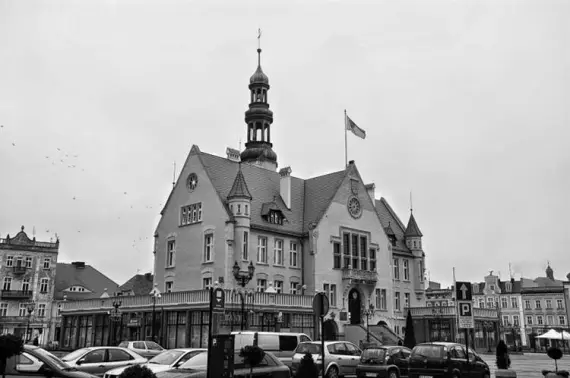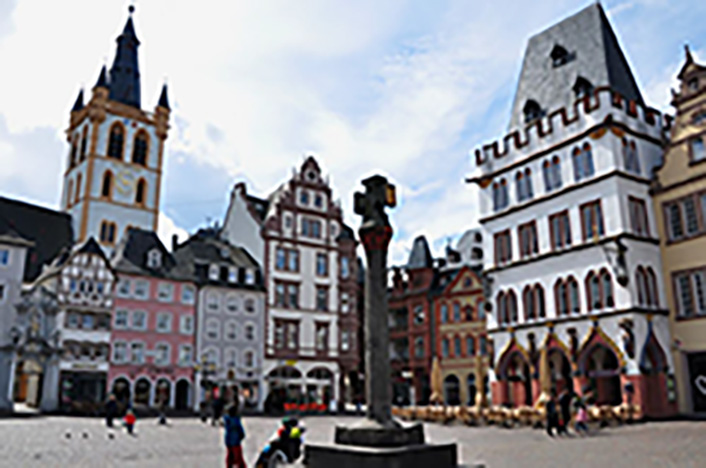Bus KROTOSZYN - TRIER. Order a ticket
KROTOSZYN

Krotoszyn is a town of nearly 29,000 people located in Greater Poland province on the Kaliska Plateau. It is located between Wrocław and Poznań, near Ostrów Wielkopolski, and is more than 600 years old. It was then that Krotoszyn was located under the Magdeburg Law thanks to King Wladyslaw Jagiello. It owes its name to the Krotowski family, who owned the city area in the 15th century.
Over the centuries Krotoszyn was repeatedly destroyed by various invasions or fires, but was rebuilt quite quickly, so that it did not lose too much of its importance and historical urban layout. In recent centuries, crafts (mainly shoemaking and tanning) and agriculture developed rapidly there.
While in Krotoszyn, it's worth seeing the market square with its historic townhouses and town hall from the late 17th century, as well as numerous churches, especially wooden ones - the church of St. Mary Magdalene from 1755 or St. Fabian and St. Sebastian from 1572, which looks like an Orthodox church. The city also has a charming park named after the Polish Army with a long history. In addition, it is surrounded by numerous forest complexes called Dąbrowa Krotoszynskie, where several scenic biking and hiking trails have been laid out.
Getting there - Krotoszyn
Krotoszyn is well connected with the rest of the country. National and provincial roads run through it. There is a train station and a bus station with daily connections to major cities and neighboring towns in Greater Poland. From the PKS Krotoszyn station you can also go to many European cities, mainly located in Germany, France, England or Italy.
Krotoszyn is a town of nearly 29,000 people located in Greater Poland province on the Kaliska Plateau. It is located between Wrocław and Poznań, near Ostrów Wielkopolski, and is more than 600 years old. It was then that Krotoszyn was located under the Magdeburg Law thanks to King Wladyslaw Jagiello. It owes its name to the Krotowski family, who owned the city area in the 15th century.
Over the centuries Krotoszyn was repeatedly destroyed by various invasions or fires, but was rebuilt quite quickly, so that it did not lose too much of its importance and historical urban layout. In recent centuries, crafts (mainly shoemaking and tanning) and agriculture developed rapidly there.
While in Krotoszyn, it's worth seeing the market square with its historic townhouses and town hall from the late 17th century, as well as numerous churches, especially wooden ones - the church of St. Mary Magdalene from 1755 or St. Fabian and St. Sebastian from 1572, which looks like an Orthodox church. The city also has a charming park named after the Polish Army with a long history. In addition, it is surrounded by numerous forest complexes called Dąbrowa Krotoszynskie, where several scenic biking and hiking trails have been laid out.
Getting there - Krotoszyn
Krotoszyn is well connected with the rest of the country. National and provincial roads run through it. There is a train station and a bus station with daily connections to major cities and neighboring towns in Greater Poland. From the PKS Krotoszyn station you can also go to many European cities, mainly located in Germany, France, England or Italy.
TRIER

Located in Rhineland-Palatinate, surrounded by numerous vines growing in the surrounding hills, Trier is a unique German city. In addition to its beautiful location, it also boasts a long history and an exceptional collection of historical monuments. Trier is one of the oldest, if not the oldest city in Germany. Its origins date back to Roman times - it was founded around 16 BC. From this period quite a few objects have survived, which today attract many tourists here. The most interesting of these are the remains of an amphitheater from the 1st century AD, thermae, a Roman bridge over the Moselle River or the Porta Nigra gate, which is today the main symbol of the city.
Trier, or Trier in German, are monuments from later times as well. To see them, it's especially worth a trip to the local market square. There are beautiful medieval temples here - the Romanesque St. Peter's Cathedral and the Gothic St. Mary's Church, as well as many beautiful Renaissance and Baroque townhouses. In the nearby area you can visit the Karl Marx House, which houses a museum dedicated to his life and ideology.
Getting to Trier. Trier - bus, plane or train?
The airport closest to Trier is in Luxembourg, another airport from where you can get here is Frankfurt-Hahn. Of course, you can also go here by your own means of transport or by train, which, however, involves several transfers and a considerable cost. You can also get to Trier by bus directly from many places in Poland. Our coaches stop at the city's main train station, Trier Hauptbahnhof. If you want to visit Trier, the city with the largest number of Roman monuments on this side of the Alps, use our wide range of coach connections.
Located in Rhineland-Palatinate, surrounded by numerous vines growing in the surrounding hills, Trier is a unique German city. In addition to its beautiful location, it also boasts a long history and an exceptional collection of historical monuments. Trier is one of the oldest, if not the oldest city in Germany. Its origins date back to Roman times - it was founded around 16 BC. From this period quite a few objects have survived, which today attract many tourists here. The most interesting of these are the remains of an amphitheater from the 1st century AD, thermae, a Roman bridge over the Moselle River or the Porta Nigra gate, which is today the main symbol of the city.
Trier, or Trier in German, are monuments from later times as well. To see them, it's especially worth a trip to the local market square. There are beautiful medieval temples here - the Romanesque St. Peter's Cathedral and the Gothic St. Mary's Church, as well as many beautiful Renaissance and Baroque townhouses. In the nearby area you can visit the Karl Marx House, which houses a museum dedicated to his life and ideology.
Getting to Trier. Trier - bus, plane or train?
The airport closest to Trier is in Luxembourg, another airport from where you can get here is Frankfurt-Hahn. Of course, you can also go here by your own means of transport or by train, which, however, involves several transfers and a considerable cost. You can also get to Trier by bus directly from many places in Poland. Our coaches stop at the city's main train station, Trier Hauptbahnhof. If you want to visit Trier, the city with the largest number of Roman monuments on this side of the Alps, use our wide range of coach connections.
© 2025 Sindbad
Technical support, assistance, payments: Sindbad IT
© 2025 Sindbad
Technical support, assistance, payments: Sindbad IT
